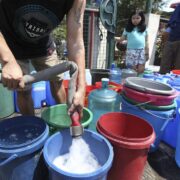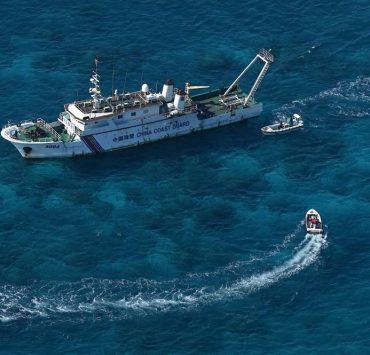Combining tourism and marine life conservation

The Philippines has some of the best dive sites and beaches in the world, without a doubt.
We have 192 reef dives, 146 ocean dives, and 91 wall dives for scuba divers to choose from, according to the Professional Association of Diving Instructors, a global body that certifies scuba divers, divemasters, and instructors.
The Philippines is known for its natural underwater resources, making it a paradise for divers. Thus, there is the potential for our beaches and coastal habitats, including marine protected areas, on this side of the Pacific Ocean to become a hub for tourism and ecology.
But the country is not yet the top destination for sun-deprived international tourists. The Department of Tourism (DOT) hopes to attract 7.7 million international tourists this year, which is a significant number when compared to the meager 4.8 million target arrivals in 2023. In contrast, Spain attracted 85.1 million foreign tourists last year. Last week, the Inquirer reported that our diving tourism industry generated a revenue of P73 billion last year, surpassing the P37 billion it generated in 2022.
Because of our rich and diverse marine life, divers from Japan, Korea, and Taiwan have long been frequenting our dive sites, which include Mabini in Batangas, Puerto Galera in Mindoro, Apo Island in Dauin, Negros Oriental, Coron in Palawan, and Cebu province’s Moalboal, Pescador, and Malapascua islands.
As winter encircles Europe, Canada, and the United States, hordes of divers and their families make their way to Batangas, Mindoro, the Visayas islands, and Palawan in a silent pilgrimage that pays homage to God-endowed underwater life.
Dive Spots. Both Mabini (Barangay Anilao) and Puerto Galera are jump-off points for diving trips in the Verde Island Passage, the world’s center of shore-fish biodiversity. Considered the “last frontier” of Philippine waters, Tubbataha Reefs (long reefs) in Palawan are world-renowned for their high density of marine species such as sharks, mantas, fish, sea turtles, seabirds, and hammerheads.
Beginners can dive into the pristine waters of Moalboal, Cebu, to witness the morning sardine run or swim with sea turtles and a school of jackfish that forms an underwater tornado around Balicasag Island, Bohol. The incredible volcanic Apo Island in Dauin, Negros Oriental, is a marine protected area. It has coral reefs, a turtle sanctuary, and jackfish. These places are also good snorkeling spots. Even Dauin has become a muck (mud) diving paradise, abundant with frogfish, seahorses, and nudibranchs.
Have you ever seen tiny seahorses swaying in underwater currents in Anilao and Dauin, or large thresher sharks doing their morning grooming in Monad Shoal in Malapascua Island, Daanbantayan, Cebu? Giant manta rays thrive in the nutrient-rich waters of the Manta Bowl located off the coast of Ticao Island in Masbate. Whale sharks, hammerhead sharks, thresher sharks, and tiger sharks are frequently seen in the area. Coron Bay, Palawan, is a great place to find Japanese shipwrecks for history enthusiasts, offering the best wreck diving in Southeast Asia. If these aren’t enough to prove the country’s underwater wealth, I’m not certain what else is.
In September 2023, the World Travel Awards (WTA) for Asia and Oceania named the Philippines as “Asia’s Leading Dive Destination” for the fifth consecutive year. The Philippines also earned the reputation as the “Best Dive Destination,” beating Malaysia, Indonesia, Japan, and even Maldives in February 2023.
Dive Committee. With Tourism Secretary Christina Garcia Frasco aiming to promote 120 dive destinations, it’s high time for the government to elevate the country’s standing as a premier diving destination.
Frasco’s recent creation of a “Dive Committee” is a welcome move because it can provide a road map for the development and sustainable growth of diving tourism, which is sitting on a pot of gold. This committee can quickly accomplish two tasks. Solve the problems facing the industry (such as the lack of recompression chambers to treat decompression sickness) and prevent unregulated growth that could result in lasting ecological damage to reefs and marine habitats.
Coral bleaching due to climate change is already a reality, and large resorts and industrial facilities that are too close to coral reefs and shorelines can cause wastewater pollution, which can harm marine habitats.
The committee must also investigate the environmental fees charged by local government units (LGUs) for every diver and tourist who enters their areas. Do these fees contribute to the restoration, preservation, and conservation of tourist spots, such as beaches and diving locations? For a long time, these funds have been used to pay the salaries of certain local employees and to manage waste, even though these budgetary items should be the responsibility of LGUs.
For comments: lim.mike04@gmail.com; @umichaell


















